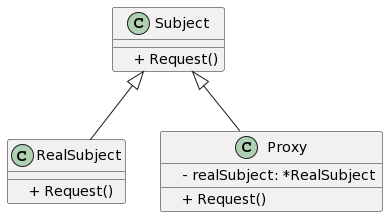1. What is the Proxy Pattern
The proxy pattern is a structural design pattern that acts as a proxy to control access to a particular object. Based on the target object (the object being proxied), the proxy pattern provides a proxy object through which clients can access the target object, allowing additional functionality to be added to the target object.
1.1 Definition of the Proxy Pattern
The proxy pattern is a design pattern that involves the collaboration of two or more objects. One object is the actual target object being called, while one or more other objects act as proxy objects. The proxy objects intercept access to the target object, providing an indirect way to access the target object.
1.2 Purpose and Objectives of the Proxy Pattern
The main purpose of the proxy pattern is to provide an indirect way to access the target object, allowing additional functionality to be added to the target object. Proxy objects can handle common logic, such as controlling access to the target object, caching, and logging. The proxy pattern can also implement lazy loading, instantiating the target object only when needed.
2. Characteristics and Advantages of the Proxy Pattern
The proxy pattern has the following characteristics and advantages:
- It can extend the functionality of the target object without modifying it.
- It can control access to the target object through the proxy object.
- It can perform additional operations before or after accessing the target object.
- It can implement lazy loading, instantiating the target object only when needed.
3. Examples of Practical Applications of the Proxy Pattern
The proxy pattern is widely used in many application scenarios. Here are some common examples of practical applications:
- Remote Proxy: Used to access objects on the network locally.
- Virtual Proxy: Used to create expensive objects as needed.
- Security Proxy: Used to control access to objects.
- Smart Reference: Used to perform additional operations when accessing objects, such as object counting.
4.1 UML Class Diagram
The following is the UML class diagram of the Proxy Pattern in Golang:

4.2 Example Introduction
Suppose we have an interface Subject that defines a Request method. We have a concrete implementation class RealSubject, which implements the Subject interface. Then we create a proxy class Proxy, which holds a RealSubject object and also implements the Subject interface. In the Request method of the Proxy class, we can perform additional operations before or after calling the Request method of RealSubject.
4.3 Implementation Step 1: Define the Proxy Interface
First, we need to define a Subject interface that contains a Request method:
package main
type Subject interface {
Request()
}
4.4 Implementation Step 2: Implement the Target Object
Next, we implement the specific target object RealSubject, which implements the Subject interface:
package main
import "fmt"
type RealSubject struct {}
func (r *RealSubject) Request() {
fmt.Println("RealSubject: Handling Request")
}
4.5 Implementation Step 3: Implementing the Proxy Object
Next, we create a proxy object, Proxy, which holds a RealSubject object and implements the Subject interface. In the Proxy's Request method, we can perform some extra operations before or after calling the RealSubject's Request method:
package main
import "fmt"
type Proxy struct {
realSubject *RealSubject
}
func (p *Proxy) Request() {
fmt.Println("Proxy: Pre-Request")
if p.realSubject == nil {
p.realSubject = &RealSubject{}
}
p.realSubject.Request()
fmt.Println("Proxy: Post-Request")
}
4.6 Implementation Step 4: Invoking the Proxy Object
Finally, we can use the proxy object, Proxy, to invoke the methods of the proxied object, RealSubject:
package main
func main() {
proxy := Proxy{}
proxy.Request()
}
Running the above code will produce the output:
Proxy: Pre-Request
RealSubject: Handling Request
Proxy: Post-Request
5.1 The Difference and Connection between Proxy Pattern and Decorator Pattern
Both the proxy pattern and the decorator pattern are structural design patterns, both of which contain a target object and a proxy/decorator object. However, there are some differences between the two:
- The proxy pattern generally involves access control to the target object, while the decorator pattern focuses more on extending the target object.
- The proxy pattern typically performs additional operations before or after the target object, while the decorator pattern dynamically adds extra functionality on top of the target object.
5.2 Comparison between Static Proxy and Dynamic Proxy
The proxy pattern can be divided into static proxy and dynamic proxy. Static proxy determines the type of the proxy object at compile time, and the proxy object is manually written by the programmer. Dynamic proxy, on the other hand, dynamically generates the proxy object at runtime based on the target object's interface. Dynamic proxy is more flexible but also more complex compared to its static counterpart.
5.3 Application of Proxy Pattern in Microservices
The proxy pattern can be applied in a microservices architecture. For example, we can use a proxy to encapsulate access to other microservices and implement mechanisms such as load balancing, rate limiting, and circuit breaking at the proxy layer. This can enhance the reliability and performance of the system. The proxy pattern can also be used for implementing service discovery and routing functionality.